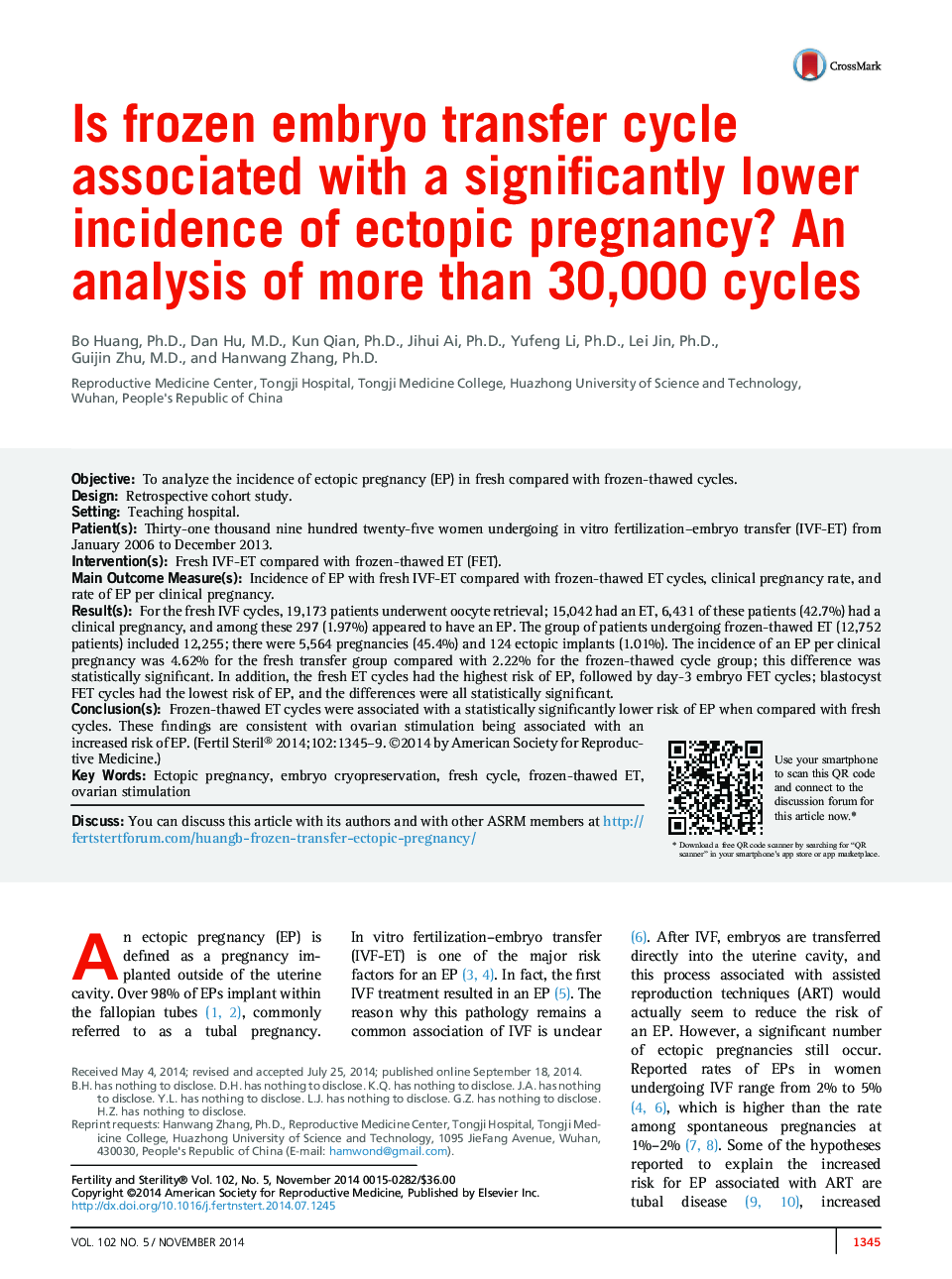| Article ID | Journal | Published Year | Pages | File Type |
|---|---|---|---|---|
| 6178767 | Fertility and Sterility | 2014 | 5 Pages |
ObjectiveTo analyze the incidence of ectopic pregnancy (EP) in fresh compared with frozen-thawed cycles.DesignRetrospective cohort study.SettingTeaching hospital.Patient(s)Thirty-one thousand nine hundred twenty-five women undergoing in vitro fertilization-embryo transfer (IVF-ET) from January 2006 to December 2013.Intervention(s)Fresh IVF-ET compared with frozen-thawed ET (FET).Main Outcome Measure(s)Incidence of EP with fresh IVF-ET compared with frozen-thawed ET cycles, clinical pregnancy rate, and rate of EP per clinical pregnancy.Result(s)For the fresh IVF cycles, 19,173 patients underwent oocyte retrieval; 15,042 had an ET, 6,431 of these patients (42.7%) had a clinical pregnancy, and among these 297 (1.97%) appeared to have an EP. The group of patients undergoing frozen-thawed ET (12,752 patients) included 12,255; there were 5,564 pregnancies (45.4%) and 124 ectopic implants (1.01%). The incidence of an EP per clinical pregnancy was 4.62% for the fresh transfer group compared with 2.22% for the frozen-thawed cycle group; this difference was statistically significant. In addition, the fresh ET cycles had the highest risk of EP, followed by day-3 embryo FET cycles; blastocyst FET cycles had the lowest risk of EP, and the differences were all statistically significant.Conclusion(s)Frozen-thawed ET cycles were associated with a statistically significantly lower risk of EP when compared with fresh cycles. These findings are consistent with ovarian stimulation being associated with an increased risk of EP.
